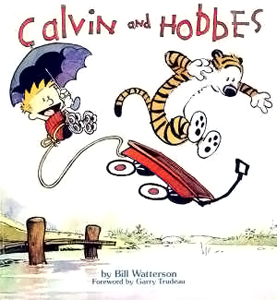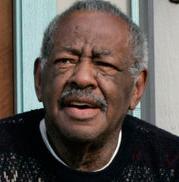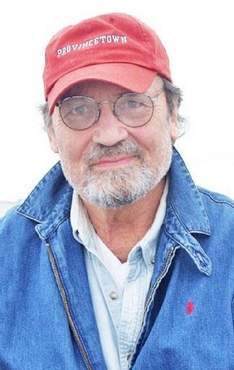Related Research Articles

Calvin and Hobbes is a daily American comic strip created by cartoonist Bill Watterson that was syndicated from November 18, 1985, to December 31, 1995. Commonly cited as "the last great newspaper comic", Calvin and Hobbes has enjoyed broad and enduring popularity, influence, and academic and philosophical interest.

Neal Adams was an American comic book artist. He was the co-founder of the graphic design studio Continuity Associates, and was a creators-rights advocate who helped secure a pension and recognition for Superman creators Jerry Siegel and Joe Shuster. During his career, Adams cocreated the characters John Stewart, Man-Bat, and Ra's al Ghul for DC Comics.

George Joseph Herriman III was an American cartoonist best known for the comic strip Krazy Kat (1913–1944). More influential than popular, Krazy Kat had an appreciative audience among those in the arts. Gilbert Seldes' article "The Krazy Kat Who Walks by Himself" was the earliest example of a critic from the high arts giving serious attention to a comic strip. The Comics Journal placed the strip first on its list of the greatest comics of the 20th century. Herriman's work has been a primary influence on cartoonists such as Elzie C. Segar, Will Eisner, Charles M. Schulz, Robert Crumb, Art Spiegelman, Bill Watterson, and Chris Ware.

The Fabulous Furry Freak Brothers is an underground comic about a fictional trio of stoner characters, created by the American artist Gilbert Shelton. The Freak Brothers first appeared in The Rag, an underground newspaper published in Austin, Texas, beginning in May 1968, and were regularly reprinted in underground papers around the United States and in other parts of the world. Later their adventures were published in a series of comic books.

Robert Kane was an American comic book writer, animator and artist who co-created Batman and most early related characters for DC Comics. He was inducted into the comic book industry's Jack Kirby Hall of Fame in 1993 and into the Will Eisner Comic Book Hall of Fame in 1996.
Paul Murry was an American cartoonist and comics artist. He is best known for his Disney comics, which appeared in Dell Comics and Gold Key Comics from 1946 to 1984, particularly the Mickey Mouse and Goofy three-part adventure stories in Walt Disney's Comics and Stories.

Steve Canyon is an American adventure comic strip by writer-artist Milton Caniff. Launched shortly after Caniff retired from his previous strip, Terry and the Pirates, Steve Canyon ran from January 13, 1947, until June 4, 1988. It ended shortly after Caniff's death. Caniff won the Reuben Award for the strip in 1971.

William Henry Jackson Griffith is an American cartoonist who signs his work Bill Griffith and Griffy. He is best known for his surreal daily comic strip Zippy. The catchphrase "Are we having fun yet?" is credited to Griffith.
Don Markstein's Toonopedia is an online encyclopedia of print cartoons, comic strips and animation, initiated February 13, 2001. Donald D. Markstein, the sole writer and editor of Toonopedia, termed it "the world's first hypertext encyclopedia of toons" and stated, "The basic idea is to cover the entire spectrum of American cartoonery."

Keith Edgar Knight Jr. is an American cartoonist and musician known for his accessible yet subversive comic strips The K Chronicles, (Th)ink, and The Knight Life. While his work is humorous and universal in appeal, he also often deals with political, social, and racial issues. Woke, a television series based on his work, debuted in 2020.

The Newspaper Enterprise Association (NEA) is an editorial column and comic strip newspaper syndication service based in the United States and established in 1902. The oldest syndicate still in operation, the NEA was originally a secondary news service to the Scripps Howard News Service; it later evolved into a general syndicate best known for syndicating the comic strips Alley Oop, Our Boarding House, Freckles and His Friends, The Born Loser, Frank and Ernest, and Captain Easy / Wash Tubbs; in addition to an annual Christmas comic strip. Along with United Feature Syndicate, the NEA was part of United Media from 1978 to 2011, and is now a division of Andrews McMeel Syndication. The NEA once selected college All-America teams, and presented awards in professional football and professional [NBA] basketball.

Morris Nolton Turner was an American cartoonist, creator of the strip Wee Pals, the first American syndicated strip with an integrated cast of characters.
The Better Half is an American comic strip created by Bob Barnes. It follows the lives of a married couple, Stanley and Harriet Parker, and the usual annoyances couples have with one another, or the events around them, after years of marriage. In 1958, the strip won Barnes the National Cartoonist Society Newspaper Panel Cartoon Award.
Wee Pals is an American syndicated comic strip about a diverse group of children, created and produced by Morrie Turner. It was the first comic strip syndicated in the United States to have a cast of diverse ethnicity, dubbed the "Rainbow Gang".

Krazy Kat is an American newspaper comic strip, created by cartoonist George Herriman, which ran from 1913 to 1944. It first appeared in the New York Evening Journal, whose owner, William Randolph Hearst, was a major booster for the strip throughout its run. The characters had been introduced previously in a side strip with Herriman's earlier creation, The Dingbat Family. The phrase "Krazy Kat" originated there, said by the mouse by way of describing the cat. Set in a dreamlike portrayal of Herriman's vacation home of Coconino County, Arizona, KrazyKat's mixture of offbeat surrealism, innocent playfulness and poetic, idiosyncratic language has made it a favorite of comics aficionados and art critics for more than 80 years.

Howard Adolph Schneider, better known as Howie Schneider, was an award-winning cartoonist, sculptor and children's book author who lived and worked in Massachusetts. His best-known comic strip, Eek & Meek, ran from 1965 to 2000 in more than 400 newspapers through Newspaper Enterprise Association.

The Three Mouseketeers is the name of two separate talking animal comic series published by DC Comics.
The history of American comics began in the 19th century in mass print media, in the era of sensationalist journalism, where newspaper comics served as further entertainment for mass readership. In the 20th century, comics became an autonomous art medium and an integral part of American culture.
Barbara Brandon-Croft is an American cartoonist, best known for creating the comic strip Where I'm Coming From, and for being the first nationally syndicated African-American female cartoonist.
Quincy is an American syndicated newspaper comic strip published from July 13, 1970 to October 4, 1986, created and produced by cartoonist Ted Shearer. The series, about an African-American boy being raised by his grandmother in Harlem, was one of the earliest mainstream comic strips to star an African American in the lead role, following Dateline: Danger! (1968-1974) and Luther (1969-1986). Another predecessor, Wee Pals, features an African-American among an ensemble cast of different races and ethnicities.
References
- ↑ Holtz, Allan (2012). American Newspaper Comics: An Encyclopedic Reference Guide. Ann Arbor: The University of Michigan Press. p. 140. ISBN 9780472117567.
- ↑ Rovin, Jeff (1991). The Illustrated Encyclopedia of Cartoon Animals. Prentice Hall Press. pp. 83–84. ISBN 0-13-275561-0 . Retrieved 8 April 2020.
- ↑ "Two Veteran Cartoonists Dead; From Mice to Men". The Comics Journal (71): 15. April 1982. Archived from the original on August 13, 2012. Retrieved August 12, 2012.